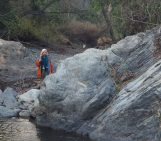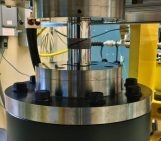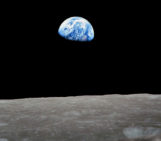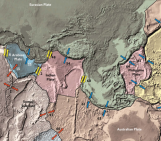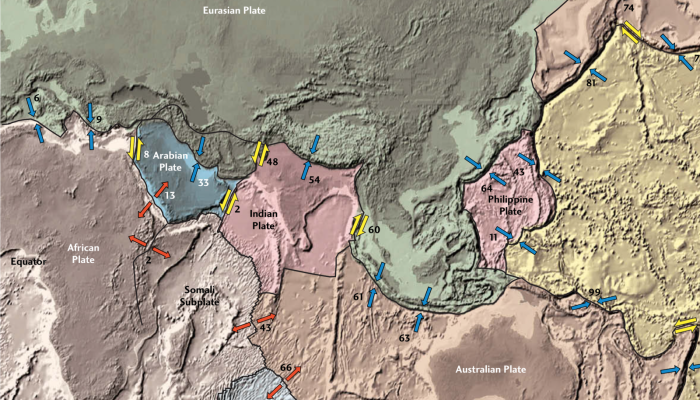
These blogposts present interviews with outstanding scientists that bloomed and shape the theory that revolutionised Earth Sciences — Plate Tectonics. Get to know them, learn from their experience, discover the pieces of advice they share and find out where the newest challenges lie!
Meeting Barbara Romanowicz
Barbara Romanowicz studied mathematics and applied physics and did two PhDs, one in astronomy from Pierre and Marie Curie University and one in geophysics from Paris Diderot University. After her postdoctoral studies at the Massachusetts Institute of Technology, she researched at the Centre national de la Recherche Scientifique (CNRS), where she developed a global network of seismic stations known as GEOSCOPE to study earthquakes and the interior structure of the earth. She currently splits her time between a professorship at UC Berkeley, California, where she does research, and a teaching position as the Chair in Physics of the Earth’s interior at Collège de France, in Paris, where she teaches to the public.
I go between theory and observations, back and forth.
What is your main research interest and which approach do you use in your research?
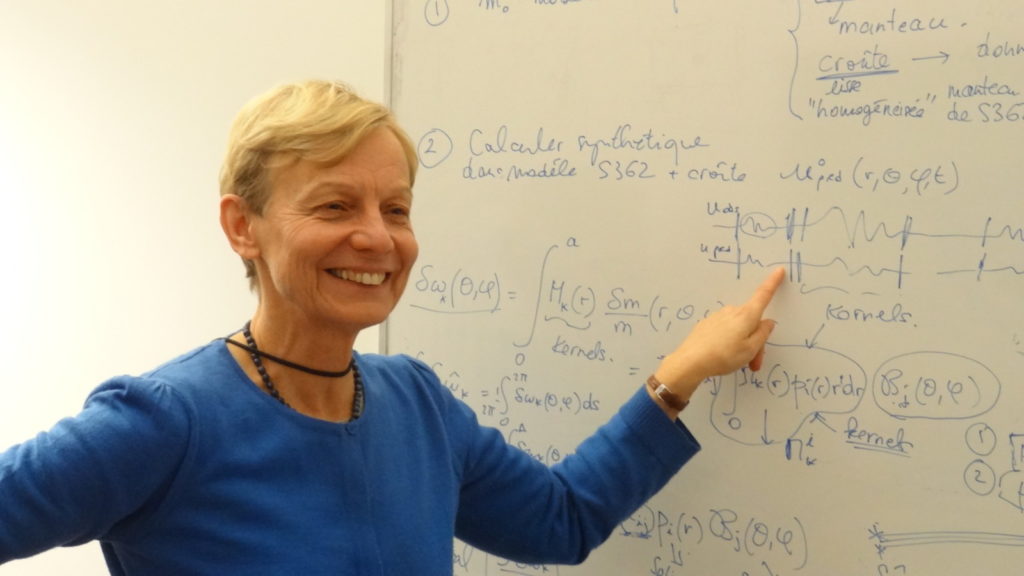
Barbara Romanowicz in class. Credit: Barbara Romanowicz
My main research interest is the Earth’s interior: figuring out the dynamics and the evolution of the Earth by providing constraints from seismic imaging at the global and continental scale, from the lithosphere to the inner core of the Earth. The methodology that we use is primarily tomography. In my team, we develop new techniques in tomography, so we can achieve higher resolution. But also other types of seismic waveform modelling.
What would you say is the favorite aspect of your research?
What I find most exciting is that I go between theory and observations, back and forth. This brings different types of excitements. For example, developing a method that works is exciting, and so is finding something new in the data. Making progress and discovering something new, basically through a lot of attempts at modelling, and commonly after a lot of time, is very rewarding.
If we do not contribute to it, we will not have any more data.
Why is your research relevant? What are the possible real world applications?
The research is relevant because we are trying to understand the driving mechanisms of plate tectonics. And plate tectonics is what causes earthquakes, volcanoes, tsunamis, and all other natural disasters related to the solid Earth. It is not directly relevant, of course, because of the different timescales; the dynamics of the interior of the Earth are in millions of years, and people are interested in timescales of decades, maybe hundreds of years. So this is a bit of a challenge, but if we do not understand the causes of natural disasters, it is not possible to mitigate them.
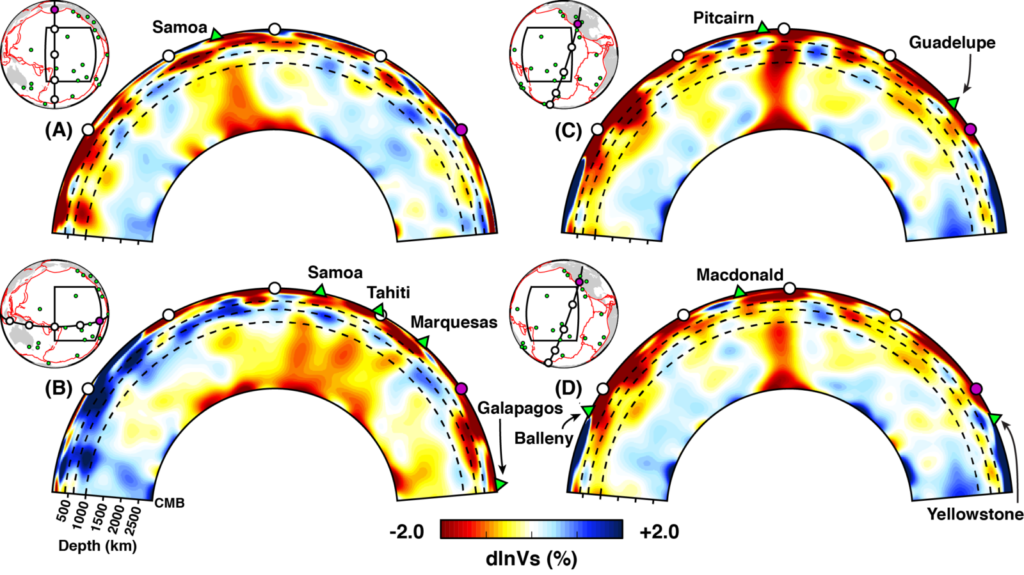
Depth cross-sections through model SEMUCB_WM1 (French and Romanowicz, Nature – 2015, doi:https://doi.org/10.1038/nature14876) highlighting broad low velocity “plume-like” conduits beneath major hotspot volcanoes in the central Pacific.
What do you consider to be your biggest academic achievement?
I was asked this question recently, and I did not hesitate to say that I was able to make some impact with my research, but also to contribute to the infrastructure of research. I have been involved since very early in my career, in the development of seismic networks at a global and later regional scale, or trying to put stations in the oceans… Developing the infrastructure to collect data for research is a very recurrent issue that people should keep in mind: if we do not contribute to it, we will not have any more data. If the younger generation of researchers keeps on considering that the data is granted, and do not take up this challenge, the good situation that we’re at will not last.
I thought it is kind of cool that we could show that.
What would you say is the main problem that you solved during your most recent project?
In a fairly recent project, we were able to not only to confirm that there is an ultra slow velocity zone at the base of the Iceland plume near the core-mantle boundary, but also to determine that it is circular in shape. This required being able to illuminate it from different sides, and showing that the same model works for whichever way you look at it. I think that the fact that we can show that is kind of cool, as it combined modelling of seismic waveforms, as well as some imagination in 3D geometry.
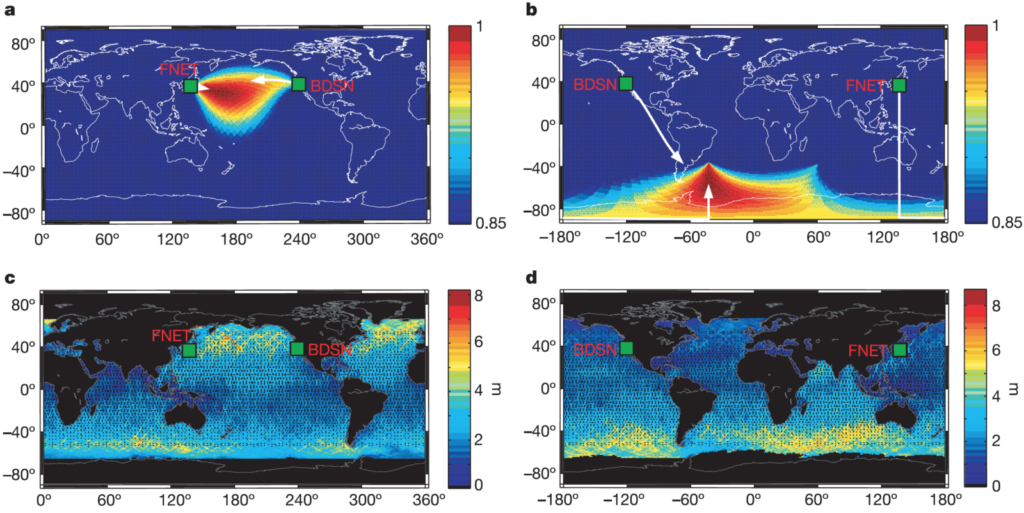
Seasonal changes in the dominant locations of the sources of the earth’s low frequency “hum” (top) as inferred from seismic data, compared to the distribution of significant ocean wave height (bottom).
We are not doing enough to raise funds [to build a seismic network infrastructure].
What would you change to improve how science in your field is done?
In my field, which is global seismology, we really rely on a large network of stations, and we need a lot of instruments. Ideally, we would like to cover the entire Earth with instruments, which is not only logistically difficult but also very expensive. I think we are not doing enough to raise funds to build this better infrastructure. The astronomical community, for example, develop decadal plans to build the next generation instruments. In a way, it is easier for them because they need perhaps only a small number of telescopes, whereas our systems are completely distributed, so it is harder for us to join forces. Nevertheless, we are not doing enough of that.

3D rendering of a portion of upper mantle shear velocity model SEMum2 (French, Lekic and Romanowicz, 2013 – Science, doi:10.1126/science.1241514) showing interaction of mantle plume conduits with the asthenosphere beneath the south Pacific superswell (A) and the presence of quasi-periodic low velocity “fingers” aligned in the direction of absolute plate motion extending below the oceanic low velocity zone (B).
What do you think are the biggest challenges right now in your field?
There are several computational challenges, in the sense that we are moving increasingly towards modelling the complete seismic wavefield using numerical methods that are computationally very expensive. One has to think about how big the computer is that you can use, and balance that by finding smart ways to speed up computations in a way that doesn’t rely too much on big computers.
Another really big challenge is to reach the ocean floor and to cover the oceans with broadband seismic observatories. We don’t have enough such stations, and two-thirds of the Earth is covered by oceans. We have less resolution in the southern hemisphere and in the middle of the ocean just because we do not have enough seismic stations on the ocean floor. This is a problem for research on ocean basin structure and deeper upper mantle structure beneath the oceans, but also for research on the very deep Earth, including the inner core. Ocean Bottom Seismometers are great, but we really need very broadband recording, with good coupling to the ground and for long enough times (several years), as well as really large aperture arrays to be able to catch seismic waves over a large azimuth and depth range.
I never really worried about my career.
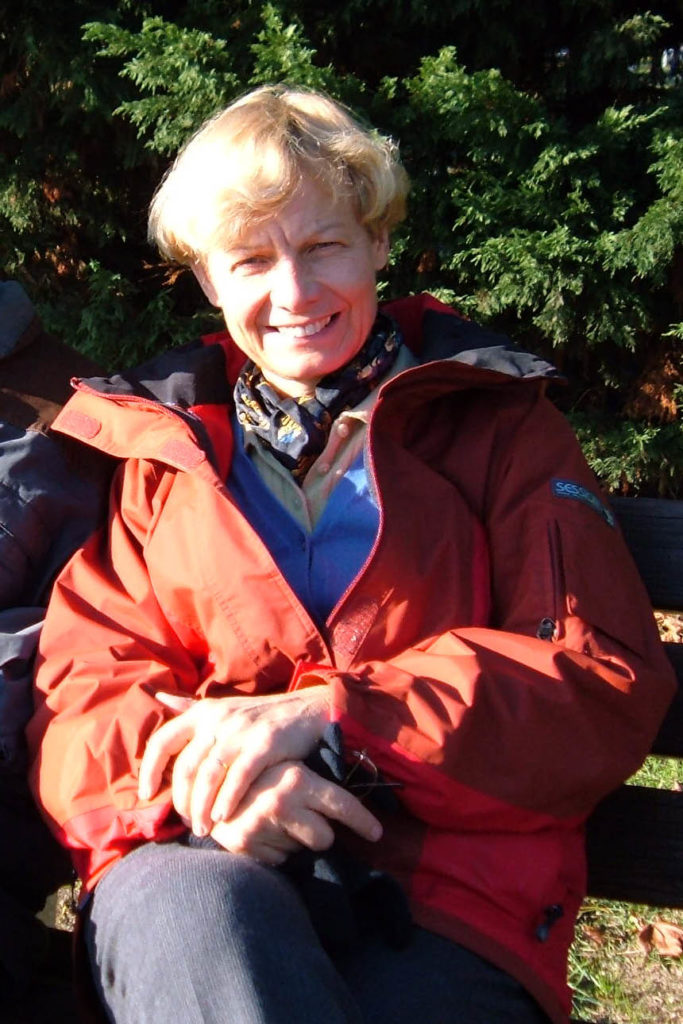
Barbara Romanowicz. Credit: Barbara Romanowicz
When you were in the early stages of our career, what were your expectations? Did you always see yourself staying in academia?
I think times have changed a lot. When I was doing my Ph.D., I really didn’t have any expectations. I never worried about my career. I simply did not think about it. Probably because I was naive, but also because there was less of a concern at that time… maybe it was easier to find jobs. The landscape was quite different.
Primarily thinking about their [ECS] research will get them where they want to be.
What is the best advice you ever received?
I think the best advice I received is to be daring, to think broadly and about the big picture. So, my best advice to Earth Career Scientists (ECSs) is the same. I would recommend ECSs not to worry too much about their immediate results or about their citation index, but to really think about their research. Primarily thinking about their research will lead them where they want to be. Otherwise, their thinking can be polluted by practical worries. Also, you will always get into situations where you cannot do all the work that you need to do for your research because you have other demands on your time. So my other advice to ECSs is to always keep a couple of hours (the best ones) during the day to completely isolate yourself and work on your research. It is very important. Everything else is easier, but the research itself is the hardest, and if you get distracted you will end up frustrated by not being able to accomplish much.
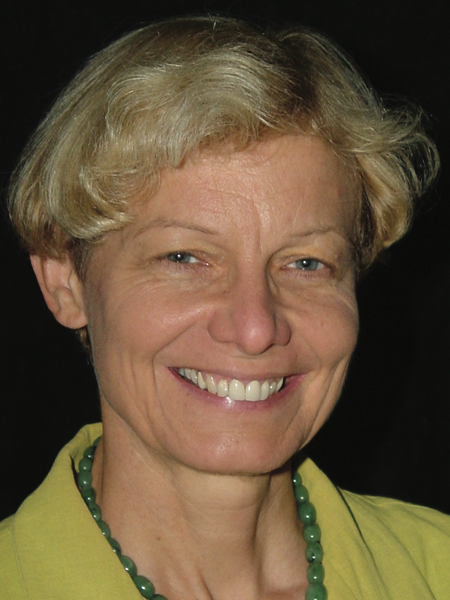
Barbara Romanowicz. Credit: Barbara Romanowicz
Interview conducted by David Fernández-Blanco

